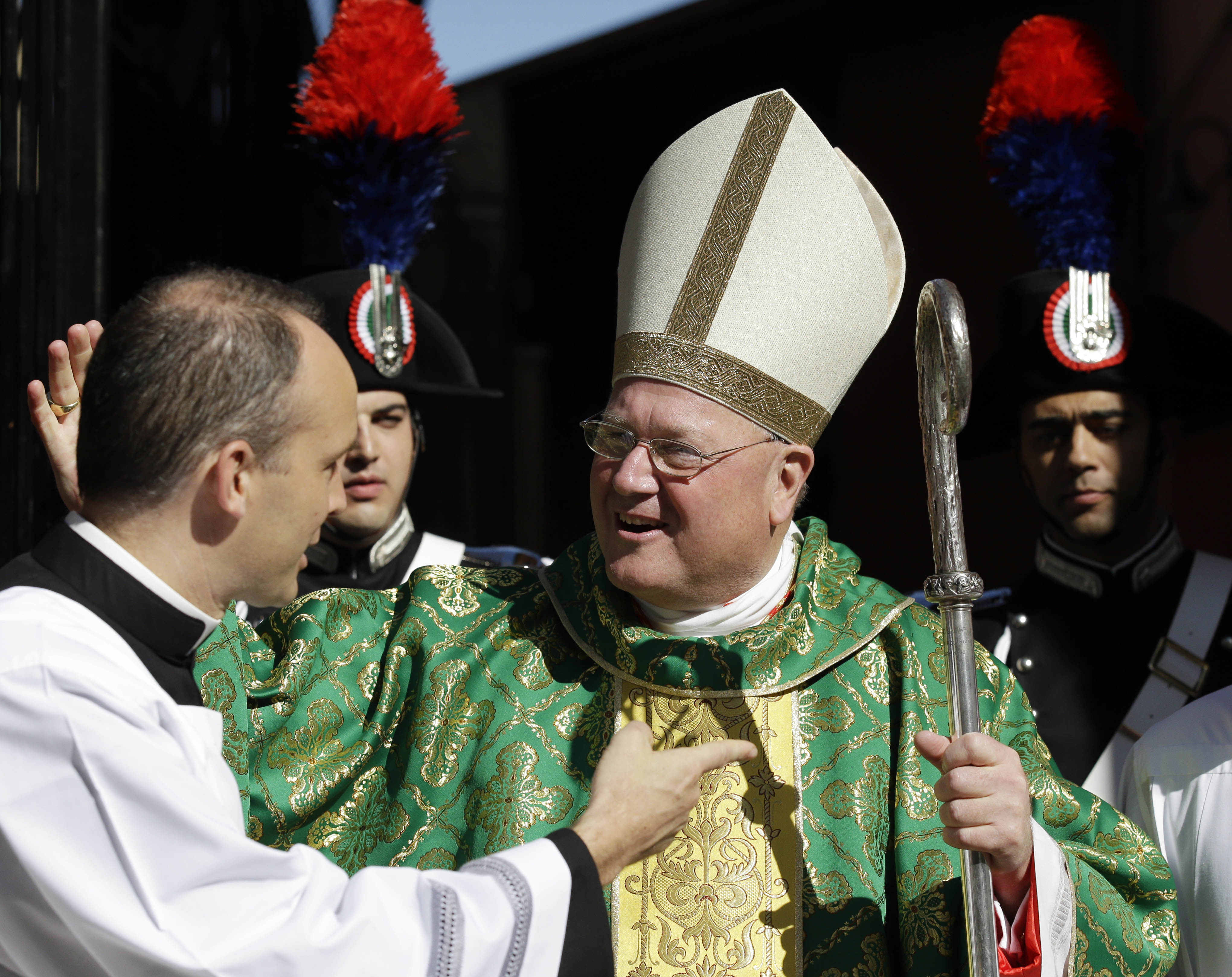Neal Gumpel, a 59-year-old screenwriter, said he was elated when he heard in October that Cardinal Timothy Dolan, archbishop of New York, announced that the church was setting up a fund to compensate sexual-abuse victims. Gumpel said that when he was 16 the Rev. Roy Drake, a Jesuit priest, sexually assaulted him.
The program, called the Independent Reconciliation and Compensation Program (IRCP), is intended to “bring a measure of peace and healing to those who have suffered abuse,” Dolan said.
The IRCP has many phases. The first, which spans from October to January, covers only those who had previously filed claims of sexual abuse against the church. The second phase, for which an implementation date has not been announced, will cover new claims filed against clergy members.
“I thought, finally, they’re acknowledging the victims,” Gumpel told Business Insider. “Finally, they’re admitting the pain they’ve caused us, not just by abusing us, but by turning their backs on us when we tried to come forward.”
But then he heard the bad news. Gumpel's claims would not be covered and he would not receive a public acknowledgement from the church.
The IRCP only covers people abused by diocesan priests and deacons, leaving out victims of religious order members, such as Jesuits, Franciscans, Benedictines, and others, and church employees, like choirmasters and coaches, claiming that religious order members do not fall under the archdiocese's purview.
The reason why comes down to a technicality, according to the church.
Although clerics from religious orders, like Drake, have to secure the permission of the archbishop of New York to function as a priest at any Catholic parish, school, or institution in the diocese, canon law stipulates that the bishop isn't liable for what clerics do outside of "sacramental duties," such as hearing confession and marrying couples, Edward Mechmann, a civil attorney and head of the New York Archdiocese's Child Protection Office, told Business Insider.
That's why Dolan's fund doesn't cover victims abused by religious order members.
As of 2013, 79% of officials in the New York Archdiocese - which includes diocesan priests, deacons, religious priests, brothers, and sisters - are from religious orders.
'Never seen anything like it'

Gumpel has tried many avenues for recourse with the church. In many ways the IRCP was his final hope.
In 2013, Gumpel went public with his allegations after decades of keeping them secret.
He contacted Mitchell Garabedian, a Boston lawyer who has represented hundreds of victims of sexual abuse by members of the Catholic Church and who was depicted in the movie "Spotlight" in 2015.
Before contacting Garabedian, Gumpel told only the people closest to him. The abuse destroyed his life and family, he said. He is estranged from his siblings, he suffered with substance abuse for years, and his trauma contributed to the failure of his first marriage.
Garabedian already knew about Drake when Gumpel called because he had worked with Richard Cerick, who said Drake had raped him when he was 13 years old in New York in 1969.
Cerick succeeded in getting a six-figure settlement, according to Garabedian, from the Society of Jesus, the religious order in the church that Drake was part of, as well as a public apology from Fordham University, the Jesuit university that housed Drake for 24 years and that continues to house a large number of New York Jesuits to this day.
Garabedian and Gumpel were both hopeful that the church would agree to compensate him and issue a public apology, just as they did for Cerick.
When Gumpel met with representatives for the Society of Jesus, they apologized for what had happened, before questioning "almost everyone" in Gumpel's life, said Gumpel and Garabedian. They eventually deemed his story credible and apologized again privately but declined to compensate him or issue a public apology.
The Society of Jesus then said it would not compensate Gumpel because Drake had abused him while he was on a leave of absence.
That reasoning doesn't make sense, Robert Hoatson, a former priest and the founder of Road to Recovery, an organization that advocates for victims of clergy sex abuse, told Business Insider. Jesuit priests have to go through a formal process to be "laicized," or removed from the priesthood, he said. Drake never did.
"I'd never seen anything like it before. They said [Gumpel's] story was credible, they acknowledged that it happened, they acknowledged the problem, and then they said they wouldn't fix it," Garabedian said.

Inconsistencies in the church
The church's distinction between diocesan priests and deacons and religious order clerics and church officials doesn't make complete sense, according to many experts on canon law.
Canon law stipulates that the bishop in any diocese holds ultimate authority over religious order clerics, Patrick J. Wall, a canon lawyer and former Roman Catholic priest who has written extensively about sexual abuse in the Catholic Church, told Business Insider.
A book on canon law by three canon lawyers - John Beal, James Coriden, and Thomas Green - concluded the same.
"There is no statute of canon law which says the bishop is only responsible in certain cases," Wall said. "The bishop is responsible, according to canon law, for the people of God. That includes any priest, religious [order member], layperson, or volunteer who works or functions in the diocese in collaboration with the bishop."
Even in practice, the church has not always been consistent in differentiating between diocesan members and religious order members when it comes to sexual abuse.
At the beginning of the abuse crisis, the church frequently settled and gave payments to victims of religious order members, Anne Barrett-Doyle told Business Insider. She is the codirector of BishopAccountability.org, an information resource that tracks sexual abuse by members of the Roman Catholic Church.
For example, the New York Archdiocese took partial responsibility for sexual abuse committed by the Rev. Bruce Ritter, a Franciscan priest, in the 1990s. Ritter was never "defrocked" from the priesthood.
In 2007, the Los Angeles Archdiocese, in conjunction with religious orders, paid out $660 million to settle claims that 508 victims brought against 221 priests, brothers, teachers, and employees in the largest church-abuse case nationwide. That same year, the San Diego Diocese agreed to pay $200 million to 144 victims who said they were abused by diocesan and religious-order clerics. In 2004, the Orange County Diocese paid $100 million to settle claims by 91 victims against 44 priests and religious-order members.

The 'look-back window'
Outside of excluding victims of religious clerics, Dolan's program has been criticized as being instituted to circumvent legal action against the church.
New York's current sexual-abuse laws, particularly those regarding child sexual abuse, are among the most stringent in the country, because they give victims a very small window of time within which to take legal action than do laws in other states.
The statute of limitations for child sexual abuse in New York gives victims only until age 23 to prosecute their abusers and until age 21 to prosecute negligent employers. By comparison, Connecticut, Florida, Delaware, and other states have no civil or criminal statute of limitations for child sex abuse.
The IRCP comes at a time when victims advocates are gaining ground pushing for statute-of-limitations reform in New York. The Child Victims Act, which has received support in the New York Legislature and Gov. Andrew Cuomo, aims to eliminate the statute of limitations for child-sexual-abuse cases. It includes a "look-back window," which would give victims of child sexual abuse one year to retroactively file civil suits against their abusers.
Cecilia Springer, age 85, would benefit from the Child Victims Act. Springer said she was abused in 1945 at the age of 14 by Sister Mary Andrew, who was the principal of Notre Dame High School in Manhattan, which she attended. A religious sister for 30 years and a Garabedian client, Springer cannot sue the church because the statute of limitations has ended.
The Child Victims Act is her last hope. She cannot participate in the IRCP because, like Gumpel, she was abused by a religious-order member, not a diocesan priest or deacon.
"If it doesn't pass, then I have no way of seeking justice for the crime committed against me," she said. "The church is turning a blind eye to me and anyone like me who was abused by a [religious-order member]. What other option do I have?"
Springer, Gumpel, and others like them would likely be the church's biggest liability if the bill passes, said Barrett-Doyle, who added that the IRCP is intended to signal to New York legislators that the church is taking care of victims themselves, while limiting how much it has to pay.
"A 'look-back window' like the one in the Child Victims Act would be catastrophic for the Church. Can you imagine how many people would sue them?" she said.
The IRCP stipulates that if claimants choose to participate in the program, they forever waive the right to sue the church, thereby releasing the institution of any liability in the future, and they must sign an agreement to adhere to "all requirements pertaining to privacy and confidentiality."
"If the Child Victims Act ever passes in New York - and Gov. Andrew Cuomo promises it will be a priority in 2017 - Dolan will have already flushed out and shackled many of the victims who might have filed suit," Barrett-Doyle wrote in an op-ed for the National Catholic Reporter in October.
"The church is doing what it always does," said Garabedian. "It's taking care of the problem quietly and paying as little money as possible, all while sweeping the abuse under the rug."


